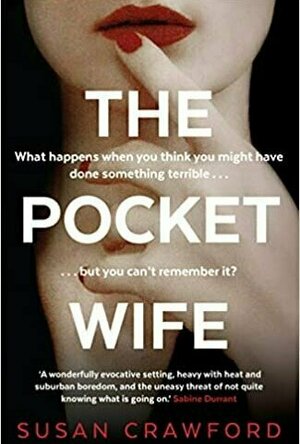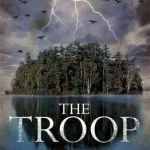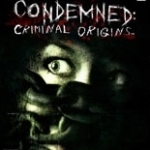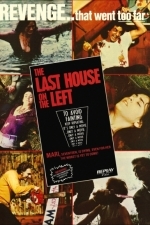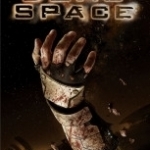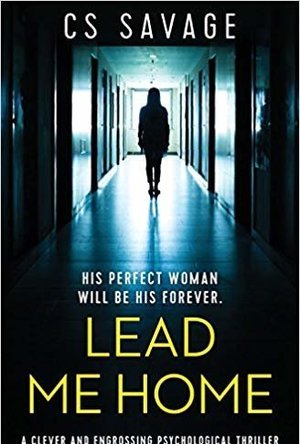Search
Lyndsey Gollogly (2893 KP) rated The Pocket Wife in Books
Nov 4, 2021
182 of 250
Book
The Pocket Wife
By Susan Crawford
Once read a review will be written via Smashbomb and link posted in comments
A stylish psychological thriller with the compelling intrigue of The Silent Wife and Turn of Mind and the white-knuckle pacing of Before I Go to Sleep—in which a woman suffering from bipolar disorder cannot remember if she murdered her friend.
Dana Catrell is shocked when her neighbor Celia is brutally murdered. To Dana’s horror, she was the last person to see Celia alive. Suffering from mania, the result of her bipolar disorder, she has troubling holes in her memory, including what happened on the afternoon of Celia’s death.
Her husband’s odd behavior and the probing of Detective Jack Moss create further complications as she searches for answers. The closer she comes to piecing together the shards of her broken memory, the more Dana falls apart. Is there a murderer lurking inside her . . . or is there one out there in the shadows of reality, waiting to strike again?
A story of marriage, murder, and madness, The Pocket Wife explores the world through the foggy lens of a woman on the edge.
I just didn’t click with it. It started out ok but I just got so bored it became a chore to read. I didn’t get a good representation of Bipolar disorder either as some one who has Bipolar it just didn’t feel authentic.
Book
The Pocket Wife
By Susan Crawford
Once read a review will be written via Smashbomb and link posted in comments
A stylish psychological thriller with the compelling intrigue of The Silent Wife and Turn of Mind and the white-knuckle pacing of Before I Go to Sleep—in which a woman suffering from bipolar disorder cannot remember if she murdered her friend.
Dana Catrell is shocked when her neighbor Celia is brutally murdered. To Dana’s horror, she was the last person to see Celia alive. Suffering from mania, the result of her bipolar disorder, she has troubling holes in her memory, including what happened on the afternoon of Celia’s death.
Her husband’s odd behavior and the probing of Detective Jack Moss create further complications as she searches for answers. The closer she comes to piecing together the shards of her broken memory, the more Dana falls apart. Is there a murderer lurking inside her . . . or is there one out there in the shadows of reality, waiting to strike again?
A story of marriage, murder, and madness, The Pocket Wife explores the world through the foggy lens of a woman on the edge.
I just didn’t click with it. It started out ok but I just got so bored it became a chore to read. I didn’t get a good representation of Bipolar disorder either as some one who has Bipolar it just didn’t feel authentic.
Acanthea Grimscythe (300 KP) rated The Troop in Books
May 16, 2018
We all have our own ways of dealing with anxiety and depression. One of mine for the former is to kick back with an audiobook and lose myself in World of Warcraft. This week, my audiobook of choice was Nick Cutter’s The Troop. I first discovered Cutter last year after receiving an arc of Little Heaven, which I enjoyed immensely. Naturally, I was not let down with this title.
It’s a fairly short listen, coming in at just over eleven hours. Narrated by Corey Brill, the book tells the story of a bunch of kids and their mentor after a strange encounter with an emaciated man. From there, things spiral downward in a rather interesting turn of events and readers watch the usual trope that comes into play when the threat of apocalypse hangs over a town – or in this case, island. The fact that the cast is mostly teenage boys? That’s of no consequence.
The Troop is what I call a “last man standing” story. I suppose that’s comparable to “final girls” when you think about it. These kids, because that’s all they are, find themselves facing a horror they cannot truly comprehend, and with the military working in favor of the greater good, are on their own. Naturally, that means we’ve got some deep psychological stuff that’s going to go on, as well as several scenes of last minute survival habits – such as harming animals. And, of course, there’s madness tinting this books periphery.
I really enjoyed this approach to a horror story born of what originally begins as a good deed (though clearly is not toward its end). The characters had their own flaws and represented the different types of kids we’re likely to find in a high school class – only, of course, without the presence of any females.
Once again, Cutter has impressed me with his ability to make me cringe, among other things. I definitely look forward to getting my hands on more of his work in the future. Also, the audiobook is worth it. Corey Brill has a gorgeous voice.
It’s a fairly short listen, coming in at just over eleven hours. Narrated by Corey Brill, the book tells the story of a bunch of kids and their mentor after a strange encounter with an emaciated man. From there, things spiral downward in a rather interesting turn of events and readers watch the usual trope that comes into play when the threat of apocalypse hangs over a town – or in this case, island. The fact that the cast is mostly teenage boys? That’s of no consequence.
The Troop is what I call a “last man standing” story. I suppose that’s comparable to “final girls” when you think about it. These kids, because that’s all they are, find themselves facing a horror they cannot truly comprehend, and with the military working in favor of the greater good, are on their own. Naturally, that means we’ve got some deep psychological stuff that’s going to go on, as well as several scenes of last minute survival habits – such as harming animals. And, of course, there’s madness tinting this books periphery.
I really enjoyed this approach to a horror story born of what originally begins as a good deed (though clearly is not toward its end). The characters had their own flaws and represented the different types of kids we’re likely to find in a high school class – only, of course, without the presence of any females.
Once again, Cutter has impressed me with his ability to make me cringe, among other things. I definitely look forward to getting my hands on more of his work in the future. Also, the audiobook is worth it. Corey Brill has a gorgeous voice.
Matthew Krueger (10051 KP) rated Condemned: Criminal Origins in Video Games
Oct 24, 2019
Scary Spooky
Condemned: Criminal Origins (known in Europe as Condemned) is a first-person survival horror video game, that is very good but underrated.
Condemned: Criminal Origins places an emphasis on melee combat and puzzle solving, including searching for fingerprints and gathering evidence. Lets talk more about the crime scene's, and gathing evidence.
Condemned directly involves the player in crime scene investigations, offering the ability to, at the press of a context-sensitive button, call upon a suite of forensic tools to find and record evidence. The player character is linked to an FBI lab via his mobile phone throughout the investigation, allowing (almost immediate) remote examination and analysis by his support worker, Rosa. Crime scene evidence can be used to solve puzzles, allowing the player to pass previously impassable barriers, and provide clues to the overall mysteries of the story.
Examples of evidence include fingerprints, footprints, fibers, fluids (such as blood or chemicals), particles, residues, markings/etchings, material, imprints, wounds, small objects, documents, and body parts.
The player character is gifted with the instinctual ability to detect when forensic evidence is nearby, allowing players to bring up the detection and collection tools when appropriate. However, the "instincts" of the character only vaguely highlight the area in which the evidence resides; it is up to the player to methodically sweep the scene and catalog any findings.
Lets talk about the plot: Condemned: Criminal Origins is set in the fictional American city of Metro. The player takes on the role of Ethan Thomas, a crime scene investigation agent with the FBI's Serial Crime Unit, as he traverses the seedier sides of the city. His journey takes him through a number of condemned buildings as he searches for the one who framed him for murder, the evasive Serial Killer X. Along the way, Ethan must use his investigative intuition and technology to examine evidence left behind by SKX, all the while fighting off the violently psychotic denizens of Metro City, who seem to be driven to such madness by a mysterious, yet seemingly extraneous force.
Their are two different ends: but really its the same ending.
If you do like psychological, crime solving horror games than you will like this one.
Condemned: Criminal Origins places an emphasis on melee combat and puzzle solving, including searching for fingerprints and gathering evidence. Lets talk more about the crime scene's, and gathing evidence.
Condemned directly involves the player in crime scene investigations, offering the ability to, at the press of a context-sensitive button, call upon a suite of forensic tools to find and record evidence. The player character is linked to an FBI lab via his mobile phone throughout the investigation, allowing (almost immediate) remote examination and analysis by his support worker, Rosa. Crime scene evidence can be used to solve puzzles, allowing the player to pass previously impassable barriers, and provide clues to the overall mysteries of the story.
Examples of evidence include fingerprints, footprints, fibers, fluids (such as blood or chemicals), particles, residues, markings/etchings, material, imprints, wounds, small objects, documents, and body parts.
The player character is gifted with the instinctual ability to detect when forensic evidence is nearby, allowing players to bring up the detection and collection tools when appropriate. However, the "instincts" of the character only vaguely highlight the area in which the evidence resides; it is up to the player to methodically sweep the scene and catalog any findings.
Lets talk about the plot: Condemned: Criminal Origins is set in the fictional American city of Metro. The player takes on the role of Ethan Thomas, a crime scene investigation agent with the FBI's Serial Crime Unit, as he traverses the seedier sides of the city. His journey takes him through a number of condemned buildings as he searches for the one who framed him for murder, the evasive Serial Killer X. Along the way, Ethan must use his investigative intuition and technology to examine evidence left behind by SKX, all the while fighting off the violently psychotic denizens of Metro City, who seem to be driven to such madness by a mysterious, yet seemingly extraneous force.
Their are two different ends: but really its the same ending.
If you do like psychological, crime solving horror games than you will like this one.
Jesters_folly (230 KP) rated Midsommar (2019) in Movies
Jul 5, 2019
Contains spoilers, click to show
This will contain spoilers
A group of friend's travel to a remote Swedish village to study their ancient midsummer festival and, let's be honest, if you've seen more than a few horror moves you know it's not going to go smoothly.
Midsommer is a film by the same people who made Hereditary and, almost from the start you can see the similarly in tone, theme, music and cinematography. Midsommar shares some of the same themes as its predecessor, touching on mental illness and ramping up the drug use but it's main focus is on family, customs and tradition.
Midsommar is different film to Hereditary being more of a thriller in the style of 'the Wicker Man' than an out and out horror, relying more on a growing tension than on any outright supernatural threat. People die but, with only one exception you never see them killed and, in most cases the deaths are not treated with much importance (except where there is specific plot relevance).
As I said, Midsommar is similar to 'The Wicker Man' but only in the same way the film 'Battle Royal' is based on 'Lord of the Flies', the film has taken some of the basic ideas and updated them leaving us with an atmospheric thriller with traces of slasher (with no slasher) and psychological movies which works to create a beautiful, disturbing movie which takes you on journey of friendship, love and family.
There are moments in the film which point to the strangeness to come but, unlike Hereditary there are some moments where the tension lets up (If only for a few minutes) most of which are provided by the character Mark who i found seemed to be slightly out of place. He didn't seem gel with the other characters well and, I felt he would have been more at home in a traditional slasher.
I found that there was a familiarity to Midsommar, influenced as it is by 'The Wicker Man' but, with a run time of almost 2 and half hours there is plenty of time events to play out how they do.
A group of friend's travel to a remote Swedish village to study their ancient midsummer festival and, let's be honest, if you've seen more than a few horror moves you know it's not going to go smoothly.
Midsommer is a film by the same people who made Hereditary and, almost from the start you can see the similarly in tone, theme, music and cinematography. Midsommar shares some of the same themes as its predecessor, touching on mental illness and ramping up the drug use but it's main focus is on family, customs and tradition.
Midsommar is different film to Hereditary being more of a thriller in the style of 'the Wicker Man' than an out and out horror, relying more on a growing tension than on any outright supernatural threat. People die but, with only one exception you never see them killed and, in most cases the deaths are not treated with much importance (except where there is specific plot relevance).
As I said, Midsommar is similar to 'The Wicker Man' but only in the same way the film 'Battle Royal' is based on 'Lord of the Flies', the film has taken some of the basic ideas and updated them leaving us with an atmospheric thriller with traces of slasher (with no slasher) and psychological movies which works to create a beautiful, disturbing movie which takes you on journey of friendship, love and family.
There are moments in the film which point to the strangeness to come but, unlike Hereditary there are some moments where the tension lets up (If only for a few minutes) most of which are provided by the character Mark who i found seemed to be slightly out of place. He didn't seem gel with the other characters well and, I felt he would have been more at home in a traditional slasher.
I found that there was a familiarity to Midsommar, influenced as it is by 'The Wicker Man' but, with a run time of almost 2 and half hours there is plenty of time events to play out how they do.
Matthew Krueger (10051 KP) rated The Last House on the Left (1972) in Movies
Sep 3, 2020
To Avoid Fainting Keep Repeating...Its Only A Movie
The Last House on the Left- was wes's directoral debut and what a start. Its a disturbing, psychological, graphic, exploitation horror film.
The plot: Teenagers Mari (Sandra Cassel) and Phyllis (Lucy Grantham) head to the city for a concert, then afterward go looking for drugs. Instead, they find a gang of escaped convicts who subject them to a night of torture and rape. The gang then kills the girls in the woods, not realizing they're near Mari's house. When they pose as salesmen and are taken in by Mari's mother (Cynthia Carr) and father (Gaylord St. James), it doesn't take the parents long to figure out their identities and plot revenge.
Wes Craven, who had no money at the time, was put on the job of synchronizing dailies for Cunningham's re-shoot. He soon began editing the film with Cunningham. He soon began editing the film with Cunningham and they became good friends. Hallmark bought the film for $10,000, and it was considered a "hit"; this prompted Hallmark to persuade them to make another film with a bigger budget, and gave them $90,000 to shoot a horror film.
This script, written under the title Night of Vengeance, has never been released; only a brief glimpse is visible in the featurette Celluloid Crime of the Century (a 2003 documentary on the making of the film).
The majority of the cast of The Last House on the Left were inexperienced or first-time actors, with the exception of Richard Towers, Eleanor Shaw, and Sandra Peabody who were all soap opera regulars and had prior film roles.
The film underwent multiple title changes, with its investors initially titling it Sex Crime of the Century. However, after test screenings were completed, it was decided to change the title to Krug and Company; however, this title was found to have little draw during test screenings. A marketing specialist who was an acquaintance of Cunningham's proposed the title The Last House on the Left. Craven initially thought the title was "terrible."
Due to its graphic content, the film sparked protests from the public throughout the fall of 1972 who called for its removal from local theaters.
Promotional material capitalized on the film's graphic content and divisive reception, featuring the tagline: "To avoid fainting, keep repeating 'It's only a movie' ..." advertising campaign. Under the Last House... title, the film proved to be a hit.
Though the film passed with an R-rating by the Motion Picture Association of America, director Craven claimed that on several occasions, horrified audience members would demand that theater projectionists destroy the footage, sometimes stealing the film themselves.
It is a distubing film but it is a excellet film by a horror icon.
The plot: Teenagers Mari (Sandra Cassel) and Phyllis (Lucy Grantham) head to the city for a concert, then afterward go looking for drugs. Instead, they find a gang of escaped convicts who subject them to a night of torture and rape. The gang then kills the girls in the woods, not realizing they're near Mari's house. When they pose as salesmen and are taken in by Mari's mother (Cynthia Carr) and father (Gaylord St. James), it doesn't take the parents long to figure out their identities and plot revenge.
Wes Craven, who had no money at the time, was put on the job of synchronizing dailies for Cunningham's re-shoot. He soon began editing the film with Cunningham. He soon began editing the film with Cunningham and they became good friends. Hallmark bought the film for $10,000, and it was considered a "hit"; this prompted Hallmark to persuade them to make another film with a bigger budget, and gave them $90,000 to shoot a horror film.
This script, written under the title Night of Vengeance, has never been released; only a brief glimpse is visible in the featurette Celluloid Crime of the Century (a 2003 documentary on the making of the film).
The majority of the cast of The Last House on the Left were inexperienced or first-time actors, with the exception of Richard Towers, Eleanor Shaw, and Sandra Peabody who were all soap opera regulars and had prior film roles.
The film underwent multiple title changes, with its investors initially titling it Sex Crime of the Century. However, after test screenings were completed, it was decided to change the title to Krug and Company; however, this title was found to have little draw during test screenings. A marketing specialist who was an acquaintance of Cunningham's proposed the title The Last House on the Left. Craven initially thought the title was "terrible."
Due to its graphic content, the film sparked protests from the public throughout the fall of 1972 who called for its removal from local theaters.
Promotional material capitalized on the film's graphic content and divisive reception, featuring the tagline: "To avoid fainting, keep repeating 'It's only a movie' ..." advertising campaign. Under the Last House... title, the film proved to be a hit.
Though the film passed with an R-rating by the Motion Picture Association of America, director Craven claimed that on several occasions, horrified audience members would demand that theater projectionists destroy the footage, sometimes stealing the film themselves.
It is a distubing film but it is a excellet film by a horror icon.
Matthew Krueger (10051 KP) rated the Xbox 360 version of Dead Space in Video Games
Oct 21, 2019
Rachel is Dead
Contains spoilers, click to show
This game, is so great. The plot, the setting, the psychological, the horror, the twist, the ending. Lets talk about it...
The Plot: it puts the player in control of an engineer named Isaac Clarke who fights Necromorphs, monstrous reanimated human corpses, aboard an interstellar mining ship, the USG Ishimura.
The player controls Isaac Clarke, a ship systems engineer who must fight his way through a mining starship infested with an alien scourge. The crew has been slaughtered, and their corpses reanimated into creatures known as "Necromorphs". Various types of Necromorphs appear throughout the game, each with different abilities and requiring different tactics to defeat.
The game has a strong science fiction atmosphere and is set in a spacecraft. It is also set way in the future.
Lets talk about the twist:
This was nothing more than another hallucination from Isaac. He’s gone mad, and in his mind, has somehow turned Nicole into one of them. The real Nicole is still dead.
Finally take the first letter from each mission to reveal a secret message… and it spells out Rachel is Dead, which is a intreating easter egg, that comes true. No one really thought about that, until years laters. To take the first letter from each mission and spell it out.
It is a great twist and when you find out, later on in the game, like close to the end, you are surpised.
I highly reccordmend this game, it is great and horrorfying.
The Plot: it puts the player in control of an engineer named Isaac Clarke who fights Necromorphs, monstrous reanimated human corpses, aboard an interstellar mining ship, the USG Ishimura.
The player controls Isaac Clarke, a ship systems engineer who must fight his way through a mining starship infested with an alien scourge. The crew has been slaughtered, and their corpses reanimated into creatures known as "Necromorphs". Various types of Necromorphs appear throughout the game, each with different abilities and requiring different tactics to defeat.
The game has a strong science fiction atmosphere and is set in a spacecraft. It is also set way in the future.
Lets talk about the twist:
This was nothing more than another hallucination from Isaac. He’s gone mad, and in his mind, has somehow turned Nicole into one of them. The real Nicole is still dead.
Finally take the first letter from each mission to reveal a secret message… and it spells out Rachel is Dead, which is a intreating easter egg, that comes true. No one really thought about that, until years laters. To take the first letter from each mission and spell it out.
It is a great twist and when you find out, later on in the game, like close to the end, you are surpised.
I highly reccordmend this game, it is great and horrorfying.

Soul Drinker
Book
When Devin and his best friend packed up all of their belongings, bid farewell to Wisconsin, and...
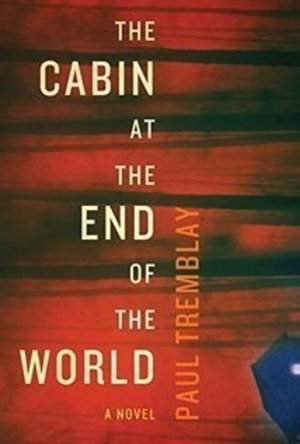
The Cabin at the End of the World
Book
The Bram Stoker Award-winning author of A Head Full of Ghosts adds an inventive twist to the home...
Sassy Brit (97 KP) rated Lead Me Home in Books
Jun 5, 2019
Lead Me Home by C.S. Savage instantly reminded me of The Blind by A.F. Brady, The Binding Song by Elodie Harper, and The Foster Child by Jenny Blackhurst all of which also feature an overworked NHS psychiatrist struggling to cope with their demanding roles, who end up going beyond the call of duty in order to protect the most vulnerable.
In this book, Dr Clancy Mclean has her suspicions about a couple of her psychotic patients. One of which, Beth, is convinced she is being stalked and her health is declining rapidly. Feeling forced to take it upon herself to protect Beth, Clancy irresponsibly brings Beth home to stay with her and her daughter, Rowan. Er, not allowed!
But teenager Rowan is having troubles of her own, in the form of an abusive ex-boyfriend who will not leave her alone. When she meets her new boyfriend, an older and more mature man, she is so smitten she decides to keep him a secret to prevent her mother interfering ~ at least until she gets to know him better. After all, she met him online. Her mother would never approve.
Would you?
The story is narrated by four characters. Clancy, her daughter Rowan, Beth who is one of Clancy’s patients and an unknown, deranged psycho, who shares his murderous plans in great (and very gruesome) detail.
Reading ‘Lead Me Home’ was like watching an episode of ‘The Wire in the Blood’, based on Val McDermid’s book of the same name ~ tense, gripping and oh, so horrific I could hardly breathe as I raced through to the end.
In fact, this is such a fast-paced, well-written, creepy read, it’s without a doubt one of my favourite psychological thriller’s this year. The psycho’s scenes totally freaked me out and I don’t think I’ve ever read a book quite as fast as this one!
When one person fell victim of the psycho, I felt absolutely, and emotionally, sucker-punched! Really, how could the author do that to me? Is this really C.S Savage’s debut novel, because I have to say I can hardly believe that is the case! I loved every minute of reading this. I’ll certainly be looking out for more by this author, and so should you!
Needless to say, I heartily recommend ‘Lead Me Home’, to other lovers of well-written crime fiction! Love creepy, psychological thrillers heavily steeped in horror? Then grab a copy of this book and prepare for a scare!
In this book, Dr Clancy Mclean has her suspicions about a couple of her psychotic patients. One of which, Beth, is convinced she is being stalked and her health is declining rapidly. Feeling forced to take it upon herself to protect Beth, Clancy irresponsibly brings Beth home to stay with her and her daughter, Rowan. Er, not allowed!
But teenager Rowan is having troubles of her own, in the form of an abusive ex-boyfriend who will not leave her alone. When she meets her new boyfriend, an older and more mature man, she is so smitten she decides to keep him a secret to prevent her mother interfering ~ at least until she gets to know him better. After all, she met him online. Her mother would never approve.
Would you?
The story is narrated by four characters. Clancy, her daughter Rowan, Beth who is one of Clancy’s patients and an unknown, deranged psycho, who shares his murderous plans in great (and very gruesome) detail.
Reading ‘Lead Me Home’ was like watching an episode of ‘The Wire in the Blood’, based on Val McDermid’s book of the same name ~ tense, gripping and oh, so horrific I could hardly breathe as I raced through to the end.
In fact, this is such a fast-paced, well-written, creepy read, it’s without a doubt one of my favourite psychological thriller’s this year. The psycho’s scenes totally freaked me out and I don’t think I’ve ever read a book quite as fast as this one!
When one person fell victim of the psycho, I felt absolutely, and emotionally, sucker-punched! Really, how could the author do that to me? Is this really C.S Savage’s debut novel, because I have to say I can hardly believe that is the case! I loved every minute of reading this. I’ll certainly be looking out for more by this author, and so should you!
Needless to say, I heartily recommend ‘Lead Me Home’, to other lovers of well-written crime fiction! Love creepy, psychological thrillers heavily steeped in horror? Then grab a copy of this book and prepare for a scare!
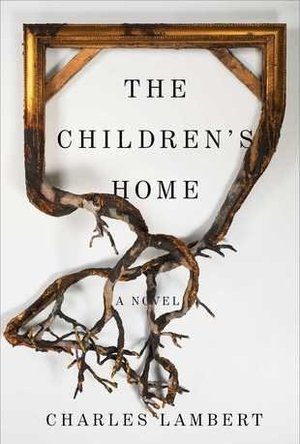
The Children's Home
Book
For fans of Shirley Jackson, Neil Gaiman, Roald Dahl, and Edward Gorey, a beguiling and disarming...
